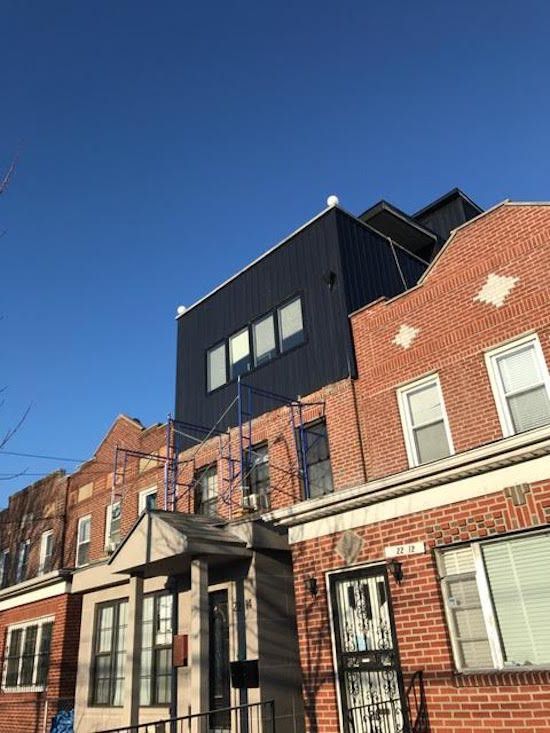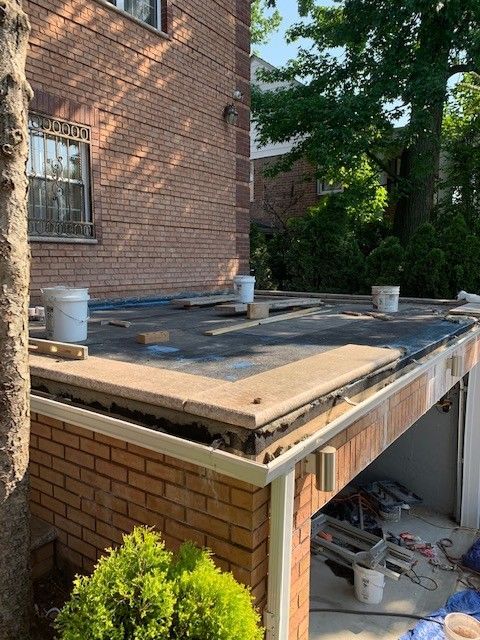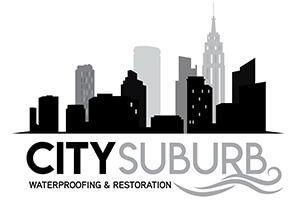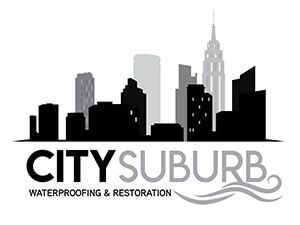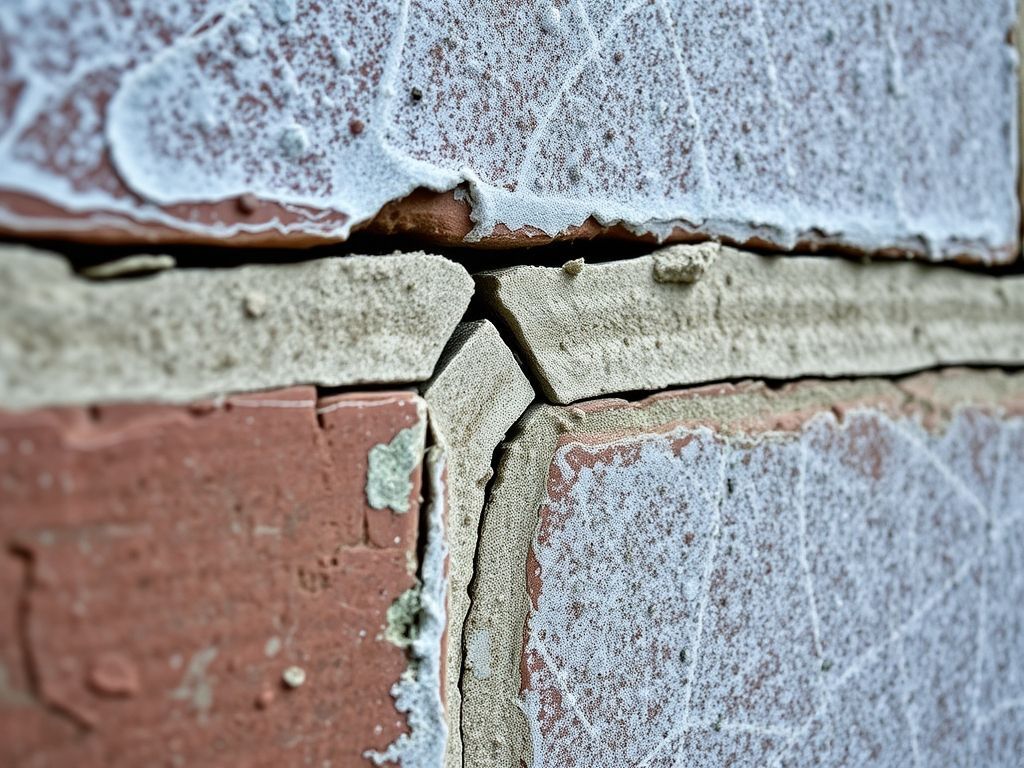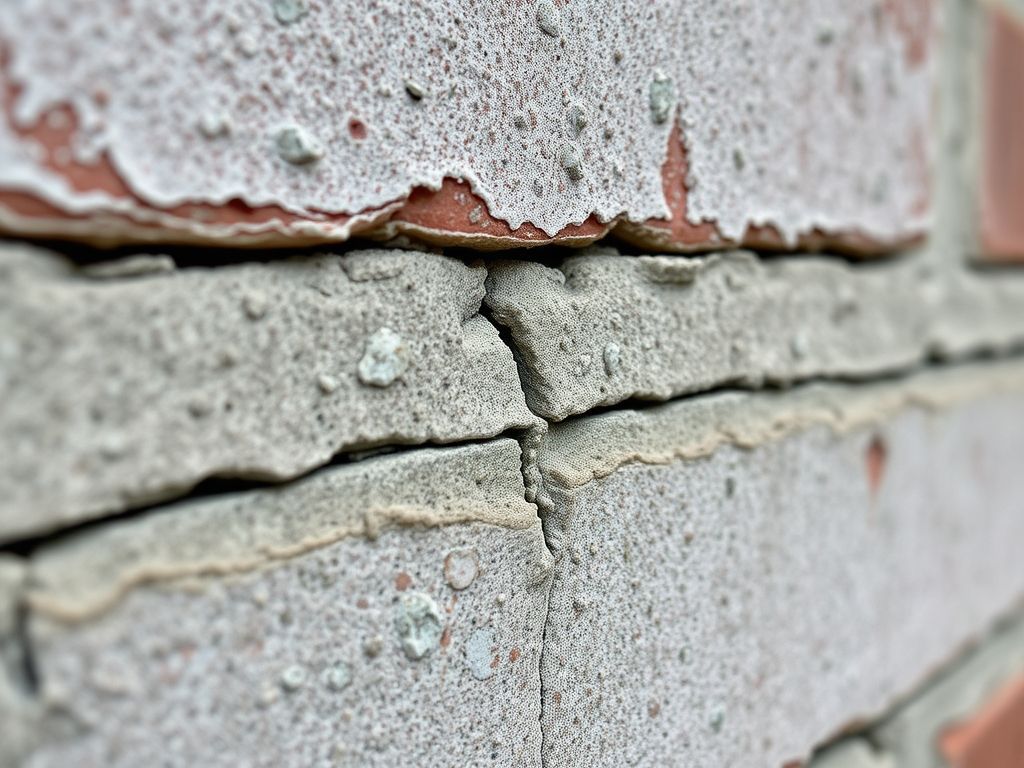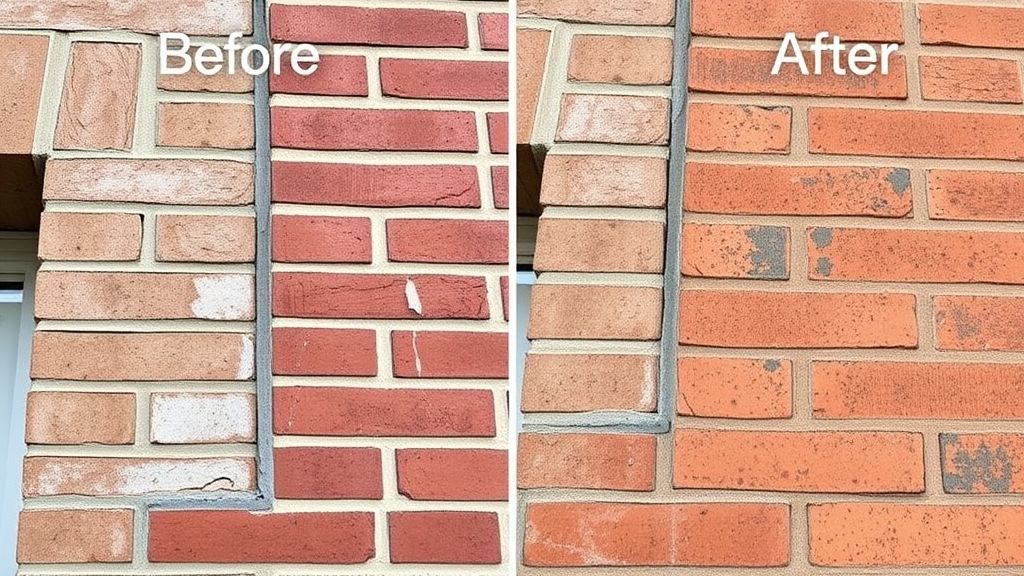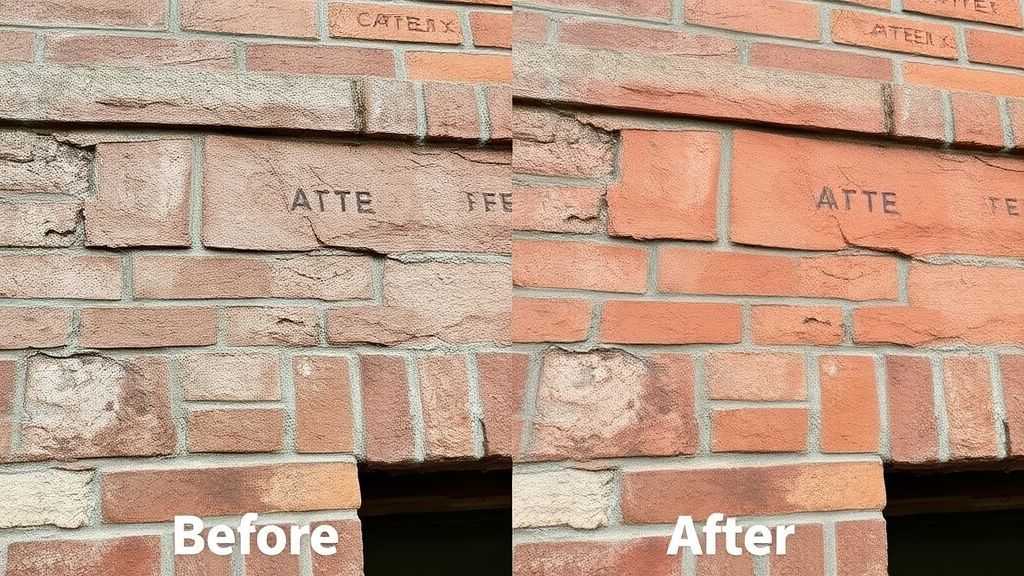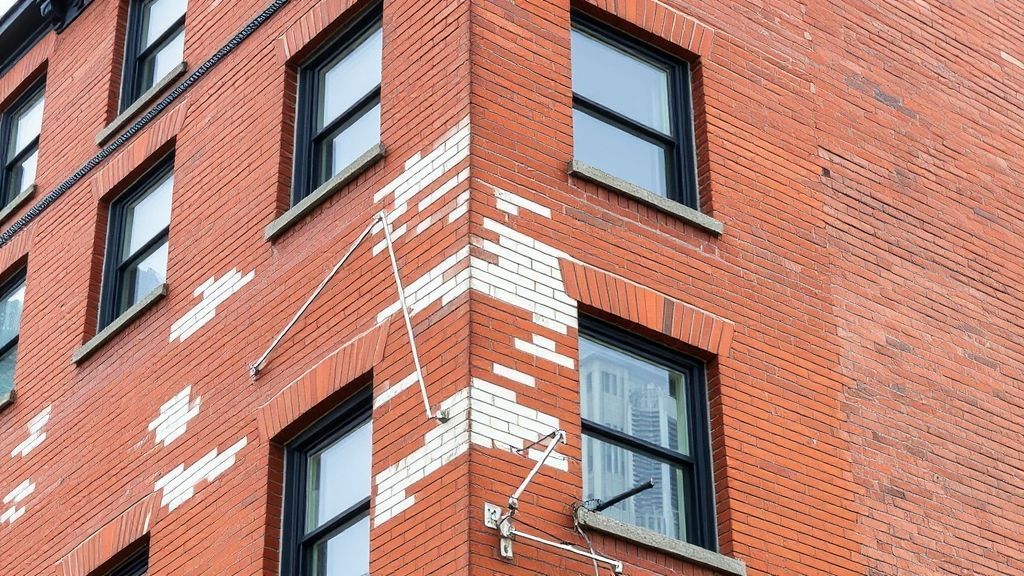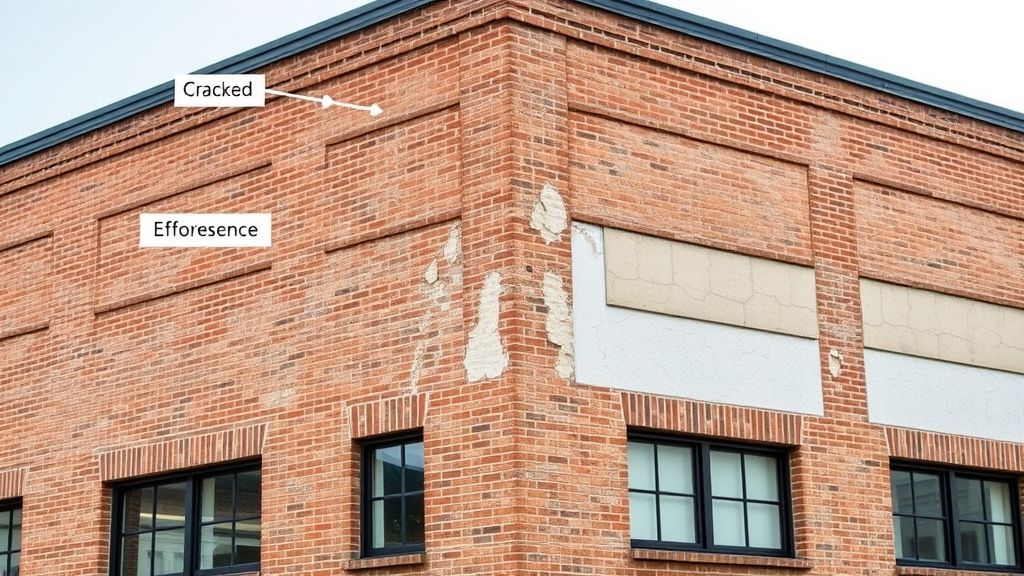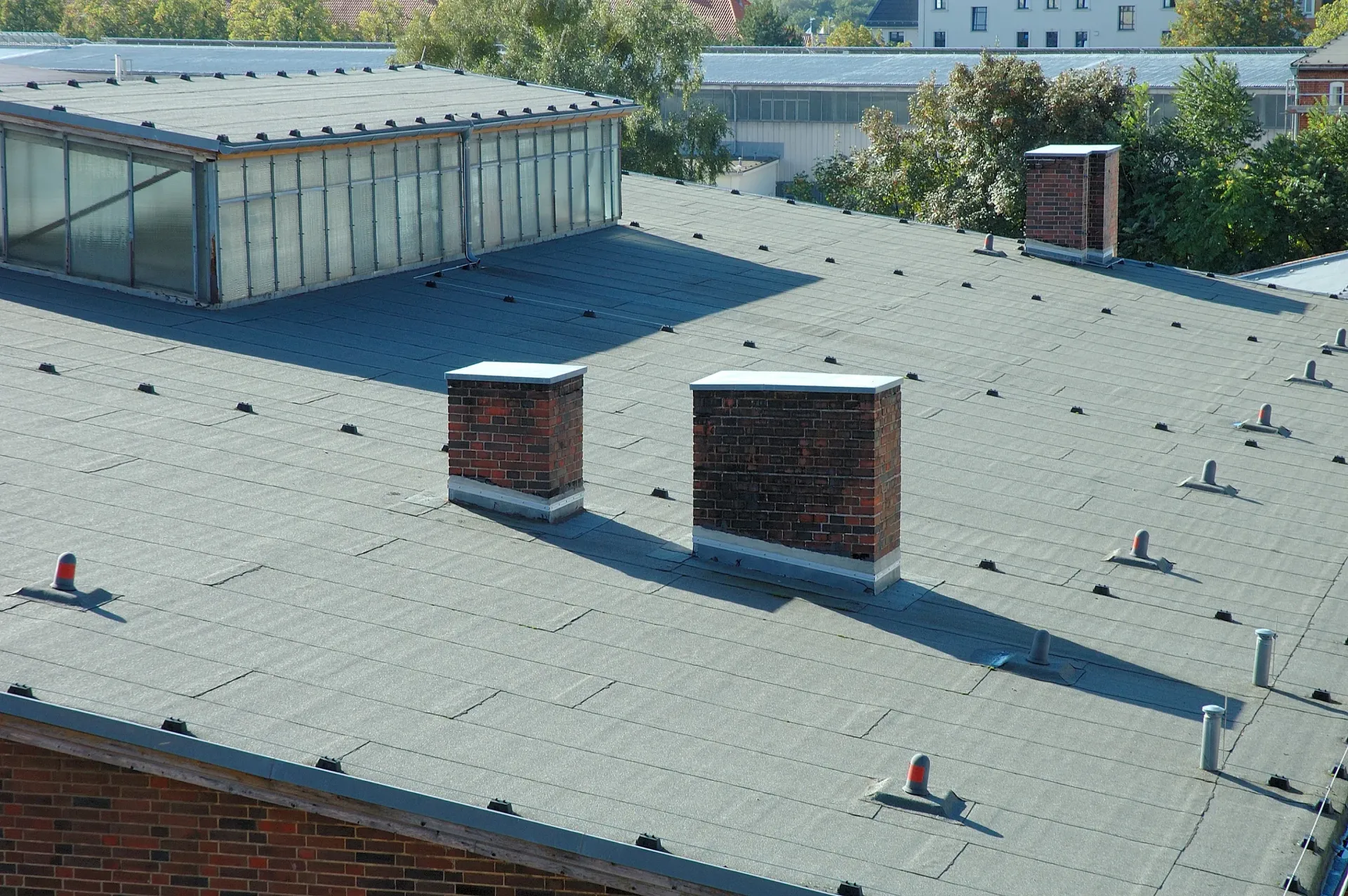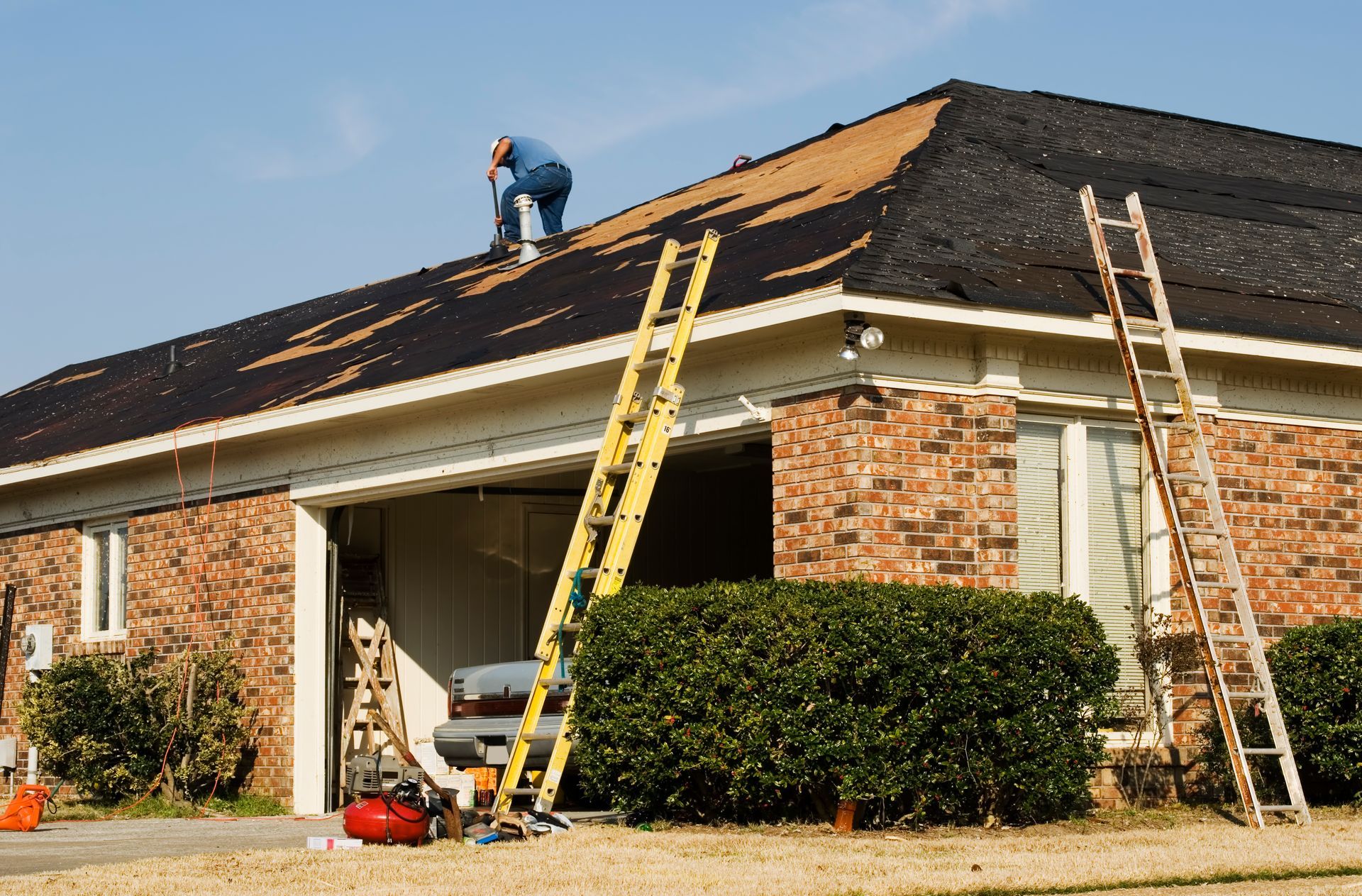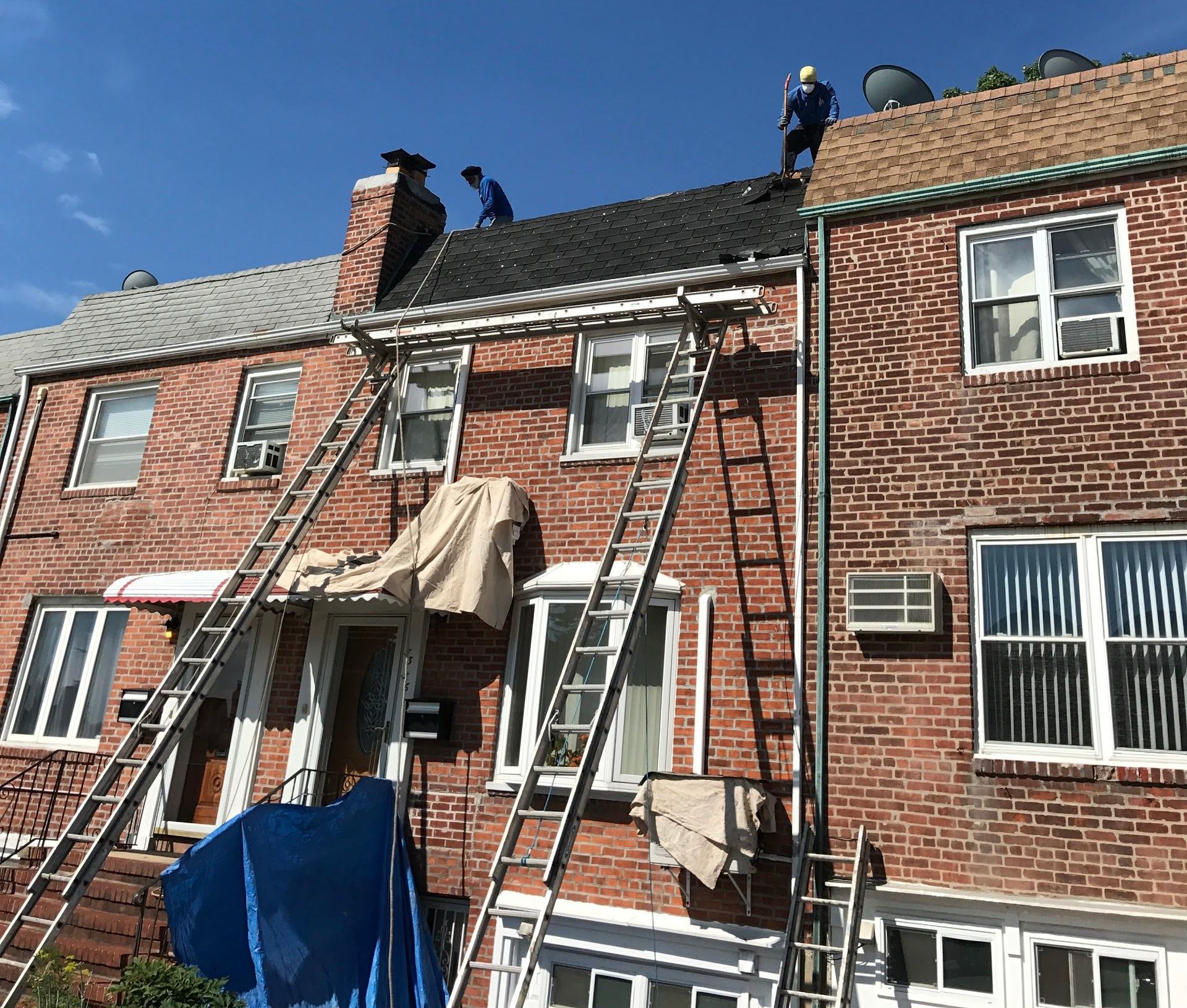Coordinating Brick Pointing Projects: Minimizing Disruption to Building Operations
Key Takeaways:
- Strategic Pre-Project Planning: Effective brick pointing coordination begins 3-6 months before work starts with comprehensive stakeholder mapping, phased implementation strategies aligned with building operations, and contingency planning for weather delays and unexpected findings.
- Communication Framework Reduces Complaints: A tailored communication approach for different stakeholders (tenants, staff, visitors) with appropriate timing (4-6 weeks initial notice, 2-3 weeks detailed impact, weekly updates) transforms project perception from indefinite disruption to a well-managed temporary condition.
- Operational Continuity Strategies: During active work, implement temporary modifications to building access, targeted noise and dust mitigation measures beyond basic containment, and scheduling optimization techniques that work around critical business functions.
- Post-Project Evaluation Builds Knowledge: Measuring actual versus planned disruption levels and documenting lessons learned creates institutional knowledge that substantially improves performance on subsequent façade maintenance projects.
Balancing technical requirements with operational priorities allows Bronx property managers to maintain building integrity while demonstrating management excellence and preserving tenant satisfaction.
Property managers in the Bronx face a common dilemma: deteriorating mortar joints require brick pointing to maintain structural integrity and appearance, yet the process threatens to disrupt normal building operations. For operations managers, facilities directors, and superintendents, this balancing act between necessary maintenance and business continuity presents a significant professional challenge.
When poorly coordinated, brick pointing projects can lead to tenant complaints, lost revenue, and damaged professional relationships. Yet with strategic planning, these projects can proceed with minimal operational impact while preserving building integrity. This article provides a comprehensive framework for managing brick pointing projects while maintaining business continuity in Bronx commercial and residential properties.
Understanding the Brick Pointing Process through an Operational Lens
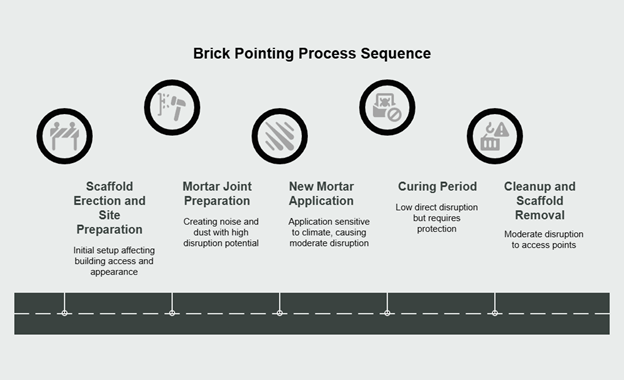
Before effective coordination can begin, operations professionals need to understand the brick pointing process from a business continuity perspective, not just a maintenance viewpoint.
The brick pointing process typically involves several stages with varying operational impacts:
- Scaffold erection and site preparation: Affects building access, parking, and exterior appearance with moderate disruption
- Mortar joint preparation: Creates noise and dust with high disruption potential
- New mortar application: Moderate disruption with climate sensitivity
- Curing period: Low direct disruption but requires protection
- Cleanup and scaffold removal: Moderate disruption to access points
In the Bronx climate, these stages face additional constraints. The temperature-sensitive nature of mortar application means projects often concentrate in spring and fall, potentially conflicting with other operational priorities. According to the Brick Industry Association's Technical Note 8B, mortar application should occur when temperatures remain between 40°F and 90°F for at least 24 hours after installation to ensure proper curing (Brick Industry Association, 2021). Winter freezing can damage uncured mortar, while summer heat can cause rapid drying that weakens bonds. This climate reality creates scheduling pressure that must be factored into operational planning.
The most significant operational disruption points typically occur during:
- Initial scaffold installation (affecting building access and appearance)
- Mortar removal (producing noise and dust)
- Work near entrances and air intake systems (affecting indoor air quality)
- Restoration of normal access patterns during project transitions
Understanding these disruption points allows operations professionals to develop targeted mitigation strategies rather than applying blanket solutions.
Pre-Project Planning: Setting the Foundation for Minimal Disruption
Effective disruption management begins long before the first scaffold appears. The pre-project phase establishes the foundation for operational continuity.
Comprehensive stakeholder mapping should identify all affected parties and their specific concerns:
- Tenant businesses (operational impact, customer access)
- Building staff (modified procedures, security concerns)
- Visitors and customers (wayfinding, accessibility)
- Neighboring properties (shared access, noise considerations)
- Building systems managers (HVAC protection, security modifications)
With stakeholders identified, develop a phased implementation strategy aligned with building operations:
- Schedule high-disruption work during low-occupancy periods
- Divide the project into zones based on operational sensitivity
- Create buffer periods between high-disruption phases
- Align project schedule with tenant business cycles when possible
- Consider seasonal factors specific to the Bronx climate
The Project Management Institute recommends using a Work Breakdown Structure (WBS) to divide masonry restoration projects into manageable phases that can be scheduled around operational constraints (PMI Construction Extension to the PMBOK® Guide, 2016). This approach allows for precise scheduling of high-impact activities during minimal-disruption periods.
Contingency planning must address both weather-related delays and unexpected findings that commonly occur during brick pointing:
- Identify project "pause points" where work can temporarily stop if necessary
- Establish clear decision trees for weather-related schedule changes
- Develop alternative work sequences when unexpected conditions are found
- Create backup plans for critical access points and building functions
- Establish communication protocols for emergency project modifications
Construction industry research indicates that restoration projects, particularly on older buildings, frequently experience schedule variances due to unforeseen conditions. This comprehensive planning approach creates resilience in the project schedule, allowing for adaptations without cascading disruptions to building operations.
Strategic Communication Framework for All Stakeholders
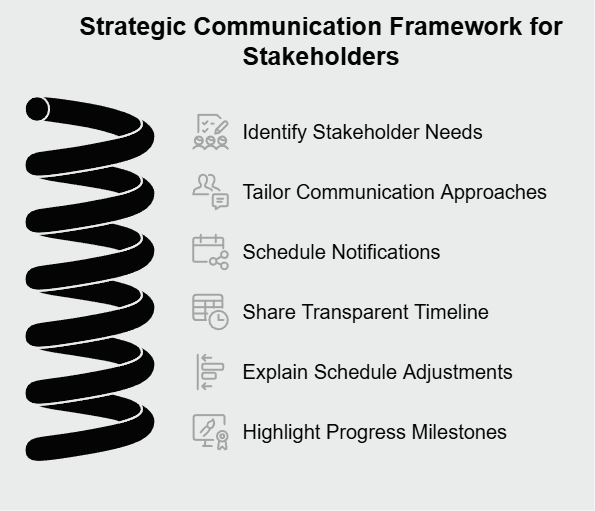
Effective communication often determines perceived disruption levels more than actual physical impact. A strategic communication framework should address different stakeholder needs with appropriate timing and content.
Tailor communication approaches to each stakeholder group:
- Tenants need advance notice, clear expectations, and regular updates
- Building staff require detailed procedural changes and safety information
- Visitors need simple wayfinding and temporary procedure guidance
- Contractors need operational constraints and coordination requirements
- Regulatory entities need compliance documentation and inspection scheduling
Timing and frequency considerations include:
- Initial notification (4-6 weeks before project start)
- Detailed impact communication (2-3 weeks before affected areas)
- Weekly progress updates throughout the project
- 48-hour notices before high-disruption activities
- Same-day alerts for unexpected developments
- Completion notifications and resumption of normal operations
Transparent timeline and impact sharing builds trust and reduces complaint frequency:
- Provide visual schedules showing work zones and timeframes
- Clearly communicate which activities generate noise, dust, or access restrictions
- Explain the reasons behind schedule adjustments when they occur
- Acknowledge disruptions rather than minimizing legitimate concerns
- Highlight progress milestones to maintain positive momentum
The International Facility Management Association has documented that proactive communication substantially reduces tenant complaints during major maintenance projects. Effective communication transforms project perception from an indefinite disruption to a well-managed, temporary condition with a clear endpoint.
Operational Continuity Strategies During Active Work
While communication sets expectations, operational strategies actually minimize disruption during active brick pointing work.
Temporary modifications to building access and usage might include:
- Creating alternative entrance paths with clear signage
- Establishing temporary delivery protocols and locations
- Rotating work zones to maintain multiple access points
- Implementing modified security procedures adapted to temporary conditions
- Adjusting parking and transportation arrangements
For temporary access modifications, the Americans with Disabilities Act (ADA) requires maintaining accessible routes with specific parameters: temporary ramps cannot exceed a 1:12 slope ratio, must be at least 36 inches wide, and must include edge protection (Department of Justice, 2010 ADA Standards for Accessible Design, Section 405). These requirements ensure all building users maintain appropriate access during construction activities.
Noise and dust mitigation approaches beyond basic containment:
- Scheduling noisy work during specific hours coordinated with tenant operations
- Using dust suppression systems and negative air pressure where appropriate
- Installing additional temporary filtration on HVAC intakes
- Creating dust barriers beyond minimum requirements near sensitive areas
- Monitoring air quality in adjacent spaces and adjusting containment as needed
OSHA Standard 1926.1153 establishes specific requirements for silica dust control during masonry work, including the use of water delivery systems or vacuum dust collection with filters that are at least 99% efficient in removing particles (OSHA, 2016). For occupied buildings, the New York City Department of Environmental Protection recommends maintaining negative air pressure of at least 0.02 inches of water column in work areas adjacent to occupied spaces to prevent dust migration (NYC DEP Guidelines for Construction and Demolition, 2023).
Scheduling optimization techniques can work around critical business functions:
- Identifying tenant-specific "quiet periods" requiring minimal disruption
- Creating project "pause triggers" for high-priority building events
- Developing weekend or off-hours schedules for sensitive areas
- Building buffer time between high-disruption activities
- Coordinating with tenants' business cycles and peak periods
Research by the Building Owners and Managers Association (BOMA) suggests that thoughtfully scheduled maintenance work can significantly reduce tenant-reported disruptions compared to standard daytime scheduling approaches. These operational strategies transform brick pointing from a building-wide disruption to a managed process that accommodates critical business functions.
Post-Project Evaluation and Continuous Improvement
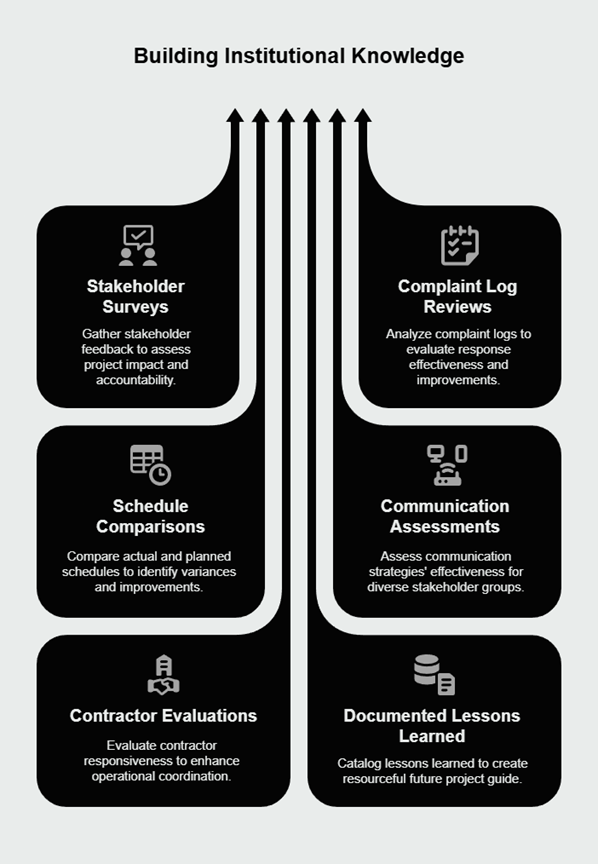
The project's conclusion offers valuable learning opportunities for future maintenance coordination. Systematic evaluation creates institutional knowledge that benefits all subsequent projects.
Measuring actual vs. planned disruption levels provides accountability and learning:
- Survey stakeholders about their experience and perception of project impact
- Review complaint logs and response effectiveness
- Compare actual timeline to projected schedule and analyze variances
- Assess effectiveness of communication strategies for different stakeholder groups
- Evaluate contractor coordination and responsiveness to operational needs
Documenting lessons learned creates valuable resource for future projects:
- Catalog effective mitigation strategies for specific building areas
- Note communication approaches that resonated with different stakeholders
- Document unexpected challenges and effective responses
- Identify improvement opportunities for future project coordination
- Record successful sequencing and scheduling approaches
The Construction Industry Institute's research on project improvement indicates that formal post-project evaluations can substantially improve performance on subsequent similar projects when lessons learned are systematically documented and applied. This evaluation process builds institutional knowledge for ongoing façade maintenance that reduces disruption with each subsequent project. The experience gained becomes a valuable professional asset for operations managers facing future maintenance challenges.
Conclusion
Effective coordination of brick pointing projects requires balancing technical maintenance requirements with operational priorities. By understanding the process through an operational lens, conducting thorough pre-project planning, implementing strategic communication, applying targeted continuity strategies, and evaluating outcomes, building professionals can significantly reduce disruption while maintaining building integrity.
The success of these projects ultimately enhances the property manager's professional reputation while preserving tenant satisfaction and building value. With careful coordination, brick pointing becomes not just necessary maintenance but an opportunity to demonstrate management excellence.
Frequently Asked Questions
Q: How far in advance should we begin planning a brick pointing project to minimize operational disruption?
A: Planning should begin 3-6 months before the anticipated start date, allowing time for comprehensive stakeholder consultation, contractor coordination, and communication planning. For larger properties or those with complex operational needs, a longer lead time provides opportunity to integrate the project with business cycles, tenant lease renewals, and seasonal considerations specific to the Bronx region. This preparation period enables creation of detailed work schedules that accommodate critical business operations and gives stakeholders adequate time to implement their own continuity plans.
Q: What are the most effective methods for containing dust and debris during brick pointing to protect building occupants and operations?
A: Effective containment goes beyond standard scaffolding and debris netting to include specialized dust barriers, negative air pressure systems for interior-facing work, and strategic scheduling of the most disruptive activities. The containment strategy should be customized based on building usage patterns, HVAC system configuration, and entrance locations. For businesses with sensitive equipment or processes, additional filtration systems may be required, while customer-facing businesses may need enhanced visual barriers and alternative entrance planning to maintain their professional appearance and accessibility.
Q: How can we effectively balance the competing priorities of accelerated project completion against minimized daily disruption?
A: This balance requires quantifying both the operational impact of extended duration and the intensity of disruption from accelerated work. Decision factors include the financial impact of business disruption for tenants, contractual obligations to maintain specific operating conditions, and the incremental cost of strategies like weekend work or extended hours. The optimal approach often involves a hybrid model where standard work proceeds during regular hours in less sensitive areas, while disruptive activities are consolidated into off-peak periods, even if this extends the overall timeline. This decision framework should be developed collaboratively with key stakeholders to align expectations.
Frequently Unasked Questions
Q: How might brick pointing work affect our building's technological infrastructure and what preemptive measures should we implement?
A: Building operators often overlook the potential impact on communication infrastructure, including antenna mounts, cable pathways, and satellite dishes typically secured to exterior walls. Vibration from mortar removal can disrupt connections and equipment calibration, while dust infiltration can affect cooling systems for telecommunications equipment. Before work begins, conduct a comprehensive audit of all exterior-mounted technology, coordinating with IT teams to plan for potential service interruptions. Consider temporary relocation of critical equipment, installation of additional dust protection for ventilation inlets, and scheduling preventive maintenance immediately following project completion.
Q: What are the hidden liability concerns when maintaining exterior operations during brick pointing projects?
A: Beyond obvious safety concerns, brick pointing creates several overlooked liability exposures including potential damage to tenant equipment from dust infiltration, business interruption claims from unexpected service disruptions, and potential accessibility violations if temporary accommodations don't meet ADA requirements. Additionally, vibration from certain brick pointing techniques can affect sensitive equipment calibration or delicate inventory in retail spaces. Before beginning work, conduct a thorough review of lease agreements regarding maintenance disruptions, consider additional riders to insurance policies covering business interruption, and document pre-existing conditions thoroughly to prevent disputes about project-related damages.
Q: How should building operations teams prepare for the psychological impact of long-term maintenance projects on occupant behavior and satisfaction?
A: The "disruption fatigue" phenomenon from extended maintenance projects manifests as increasing complaint frequency, lease renewal hesitation, and deteriorating compliance with temporary procedures as projects proceed. Counterintuitively, occupants often react more negatively to inconsistent or unpredictable minor disruptions than to significant but well-communicated impacts. Prepare for this by implementing a tapering communication strategy that increases engagement as the project progresses, creating visible progress indicators, establishing clear escalation paths for concerns, and potentially introducing tenant appreciation programs for affected areas. Track complaint patterns to identify early indicators of disruption fatigue requiring intervention.
Disclaimer: This content is for informational purposes only and not intended as business advice. No business relationship is formed through this content. The information provided does not replace professional consultation. Please consult qualified business advisors for guidance specific to your organization's situation.
Brick Pointing Done Right—With Minimal Disruption
At City Suburb, we know brick pointing is essential—but it shouldn't interfere with your building’s daily operations. With years of experience serving the Bronx and surrounding boroughs, we specialize in efficient, low-disruption masonry solutions that protect your property and keep tenants happy.
“Great, quality work doing brick repointing.”
— William Wiedenbaum
🧱 Ready to plan a seamless brick pointing project?
Contact us today for a free consultation tailored to your building’s needs.
📲 Follow us on Instagram and Facebook to see how we bring quality and care to every project across NYC.


